How to Clean Oven Racks: An Effective Guide for Busy Cooks
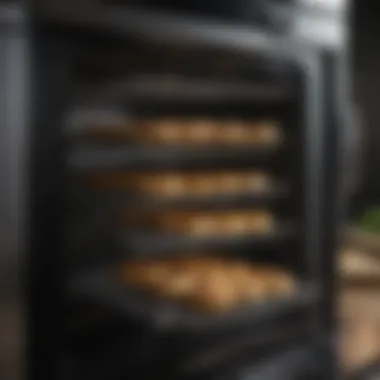
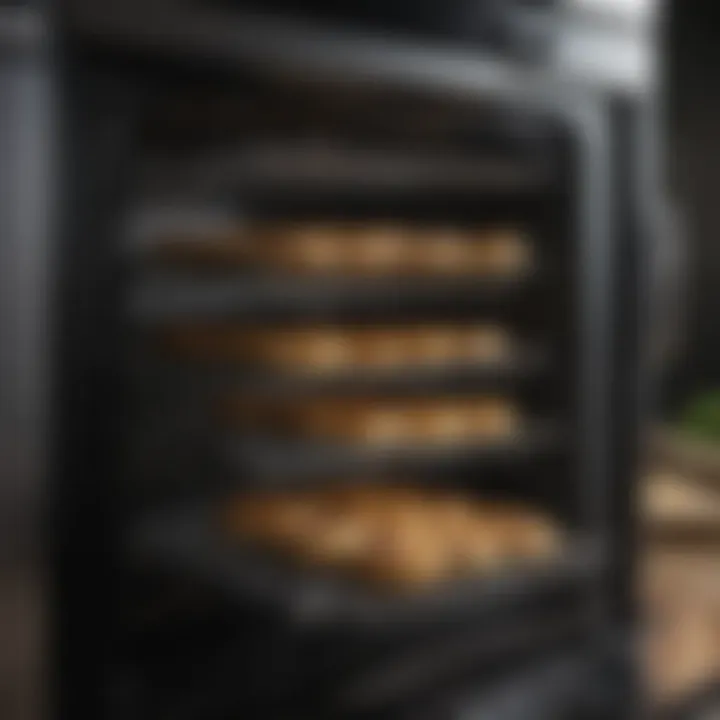
Intro
Cleaning oven racks is a chore many tend to avoid. They often accumulate grease, grime, and food particles over time. A common perception is that tackling this task demands excessive time and energy. However, it doesn't have to be. Understanding how to clean oven racks efficiently can make this process simpler and less daunting.
In this guide, you will discover various methods to clean oven racks, including traditional techniques and modern-day solutions. Despite the time constraints of a busy schedule, having clean and presentable oven racks contributes significantly to an overall tidy kitchen. This article will offer effective strategies that yield high cleanliness standards without imposing too much effort. Whether you consider yourself a novice or an expert in the kitchen, maintaining spotless oven racks is certainly achievable. Let’s begin by exploring the stages involved in this often-overlooked cleaning task.
Preparing for Cleaning
Before getting hands-on with your oven racks, proper preparation is essential. Clear an adequate working space to accommodate the awkwardness of certain racks. You may want to lay down old newspapers or a towel to collect any mess made during cleaning.
Some supplies that might be affixing during this process include:
- Baking soda
- Dish soap
- Sponge or scrubbing pad
- Vinegar (optional)
- Old toothbrush (for stubborn stains)
As you prepare your area and gather your cosemicals, always remember to prioritize safety. No one wants to slip on a wet floor or get a nasty cut from mishandling tools. It's wise flexibility to wear gloves, especially when cleaning with harsh chemicals.
Cleaning Methods Overview
This section delves into multiple cleaning techniques, providing options that can suit various preferences and schedules. Every method yields good results, but time investment and materials vary greatly among them.
Method 1: Baking Soda Paste
Creating a baking soda paste is a straightforward approach that's both cost-effective and efficient. To create this paste, combine:
- Three parts baking soda
- One part water
Apply this mix generously onto racks and let it sit for about 30 minutes. Afterward, scrub them with a sponge. Rinsing with water ensures you eliminate both grime and any remaining baking soda residue.
Method 2: Soaking in Warm Soapy Water
If removal from the oven permits, soaking the oven racks can seem effortless. Fill a tub or basin with warm, soapy water and submerge the racks for several hours or, simply, overnight if time allows. The soaked grease minimizes scrub efforts and typically results in easier cleaning with a sponge. Rinse adequately with clean water after scrubbing them down.
Method 3: Using Vinegar
Utilizing vinegar is another effective option for those who appreciate natural cleaners. Combine equal parts of vinegar and water in a spray bottle. Spray the solution on the racks and allow a few minutes for the mix to dissolve grime. This option may require scrubbing afterward, but the acidic properties of vinegar work wondersuosdy against grease.
Putting Knowledge into Practice
Now equipped with several methods to clean your oven racks, choosing one based on convenience is vital. There is no right or wrong answers in this matter; behavior or anticipated results will drive decisions. Regardless of choice, the most important thing is to recreate that pristine appearance that reflects good inside maintenance. Proper maintenance of oven racks leads to a cleaner cooking process, too.
End
Cleaning oven racks does not inherently need to be a professional-grade ordeal. Utilizing these interchangeable techniques allows a range of outcomes based on time or effort put into the task. Taking steps to maintain cleanliness improves your cooking atmosphere and can elevate the dietary experience altogether.
Despite the fact that these methods differ, each concludively provides satisfactory cleanup results that suits diverse lifestyles. A clean kitchen return ultimately both yields healthier cuisine and a more visually appealing kitchen to serve meals from. Therefore, conducting a simple task like this deserves attention—it can save focus on more important matters within kitchen adventures.
Prologue
Keeping oven racks clean is vital for both hygiene and functionality. Grime and food particles can affect food safety and the efficiency of your oven. When oven racks go uncleaned for too long, built-up grease can lead to unpleasant smells and even smoke during cooking.
Moreover, regularly cleaning your oven racks can save you time when cooking under pressure. Ontop of that, maintaining cleanliness helps preserve the lifespan of the racks and the oven itself. Cooking enthusiasts often seek efficient methods to reduce efforts in kitchen maintenance, ensuring they can focus more on preparing delightful meals.
In this article, you will find an effective guide on various methods to clean oven racks without overwhelming hassle. Every step is discussed to guide you seamlessly from preparation through to post-cleaning care.
“A clean oven is the starting point for kitchen hygiene.”
By the end of the article, you will have practical insights on keeping oven racks pristine, enhancing not only your cooking experience but also the integrity of your kitchen environment.
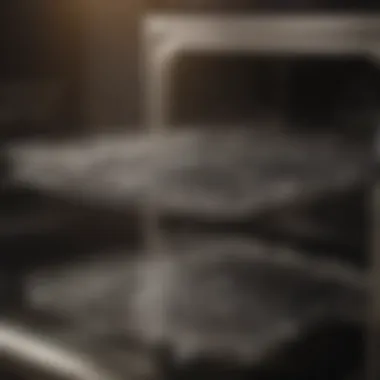

Understanding the Need for Clean Oven Racks
Clean oven racks are essential for both functionality and hygiene in the kitchen. Over time, oven racks accumulate grease, food particles, and grime, which can pose several issues in your cooking space.
First and foremost, dirty oven racks can affect the quality of your meals. Residual food on the racks may burn and release unpleasant odors or flavors during cooking. This can compromise the taste of even the most carefully prepared dish. When your oven racks are visible, they contribute directly to the overall cleanliness of the oven, impacting the aesthetics of your kitchen as well.
Moreover, ensuring the cleanliness of your oven racks has health implications. Bacteria thrive in residues left on surfaces, fuels, and temperature settings in your kitchen. Lack of regular cleaning can lead to cross-contamination, which poses risks when preparing food for consumption. Well-maintained oven racks help in preventing food allergies and other issues related to unsanitary cooking environments.
Considerations for Regular Cleaning
Cleaning oven racks should not be an overlooked household chore. The frequency depends on individual cooking habits. For instance, regular use of your oven for roasting and broiling can lead to more frequent residues. Therefore, homeowners should establish a practical cleaning schedule that effectively manages build-up and ensures optimum hygiene.
Incorporating regular rack cleaning into your kitchen maintenance routine helps to avoid excessive build-up that takes more time and effort to remove later. It is generally more efficient to address dirt and residues promptly rather than letting them accumulate.
"Having clean oven racks not only helps in preparing better food but also ensures a healthy food preparation atmosphere in your kitchen."
Finally, establishing your methods of cleaning deepens your understanding of how the products and methods you choose impact your kitchen hygiene. It allows you to customize your cleaning regime to align with specific needs, values, and preferences. This knowledge eventually translates to a more enjoyable and safe cooking experience, reinforcing the importance of clean oven racks in any culinary endeavors.
Preparation for Cleaning
Before embarking on the task of cleaning oven racks, it is crucial to put together a solid preparation plan. This phase lays the groundwork for a successful cleaning process, streamlining effort while promoting both safety and effectiveness. Without adequate preparation, you may face unnecessary obstacles that could hinder your overall experience.
Gathering Supplies
Recommended cleaning agents
Choosing the right cleaning agents is vital for effective oven rack cleaning. Commonly recommended cleaners include dish soap, baking soda, vinegar, and even specialized oven cleaners like Easy-Off. These products are favored due to their ability to break down grease and grime. Baking soda, for instance, is non-toxic and environmentally friendly, making it a popular choice for many households. It has a slight abrasive texture which aids in scrubbing off stubborn stains.
While vinegar is also an option, combining it with baking soda creates a potent cleaning solution. However, care must be taken when using commercial oven cleaners, as they can contain harsh chemicals. Always assess the needs of your specific racks before selecting a product.
Sufficient workspace
Next, consider workspace setup. A clean, organized area is essential for efficent cleaning. A large surface like a kitchen sink, bathtub, or a sturdy countertop provides adequate room for the racks to soak. This prevents any unnecessary mess and allows you to fully focus on the task.
Ensuring ample workspace will not only make cleaning easier but also safer, particularly if you are working with heavy or large oven parts. One advantage of a good workspace is the ability to spread out your cleaning supplies as well, eliminating chaos when transitioning between cleaning methods.
Safety Precautions
Wearing protective gear
When preparing to clean, wearing protective gear such as gloves and masks is important. Cleaners can irritate skin and that is not advisable when dealing with stubborn residues. Gloves will protect not just your hands from chemicals but also provide grip as you scrub stubborn stains away.
Another aspect is that using proper gear makes the cleaning process much more comfortable and painless. However, always choose gear that allows flexibility of movement. Heavy or bulky gear can hinder your progress.
Ensuring good ventilation
Maintaining good ventilation is crucial, especially if cleaning with strong odors or chemical agents. Always open windows when possible or turn on exhaust fans to minimize fumes in the air. Poor air quality could lead to headaches or respiratory issues.
Furthermore, maximizing airflow helps counteract any overpowering smells from the cleaning agents. This, in turn, enhances your overall cleaning experience. Good ventilation also ensures that any remaining residue can evaporate effectively, preserving your workspace’s environment.
Preparing for cleaning guarantees a smoother task ahead. Take time to set the stage for success.
Understanding the foundational steps in preparation enhances efficiency. Thoughtful gathering of supplies and maintaining safety precautions lead to effective cleaning of your oven racks.
Methods for Cleaning Oven Racks
Cleaning oven racks is essential for maintaining a hygienic kitchen environment. Ovens accumulate grease and grime over time, making oven racks dirty. Using proper methods ensures the racks remain functional and easy to use. Healthy kitchen practices often lead to better cooking experiences.
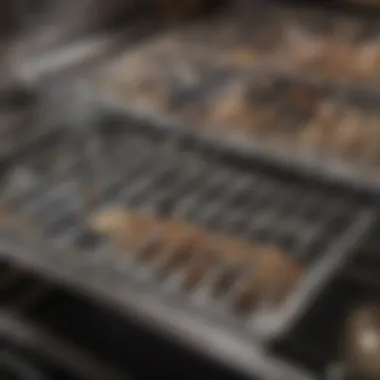
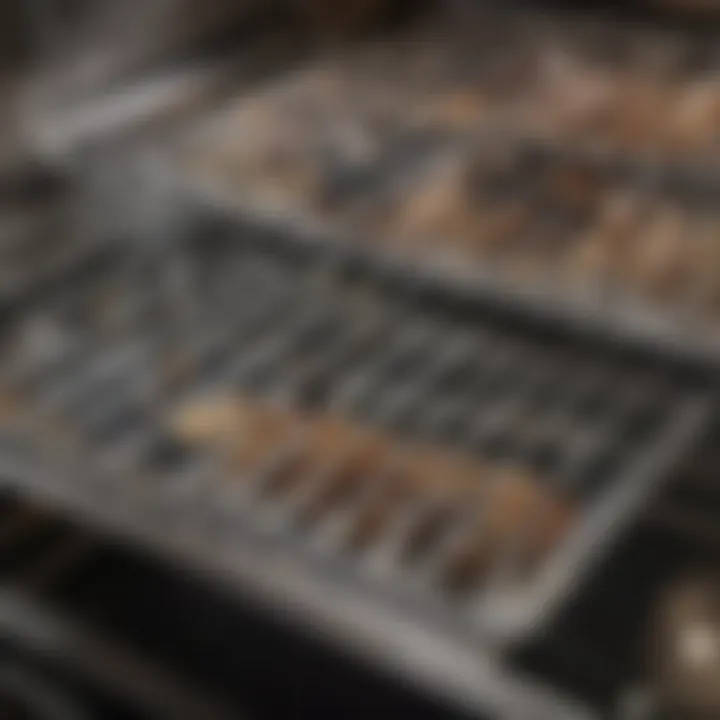
Soaking Method
Using warm, soapy water
Using warm, soapy water is a widely recommended method for cleaning oven racks. This method involves soaking the racks in a solution of warm water combined with non-abrasive dish soap. It effectively softens the grease and baked-on food, allowing for easier removal. This approach is highly beneficial as it uses common household items, making it accessible.
The warm water increases the effectiveness of the soap, especially against stubborn grime. Simple yet efficient, it requires no special skills and is safe for most oven racks. However, this method does merit patience as it may not remove all stains immediately.
Duration for soaking
The duration of soaking oven racks is just as crucial as using warm, soapy water. Generally, a soaking period of at least 30 minutes is advisable, but it can be extended for severe stains. Longer durations tend to yield better results, as the solution loosens tough debris. Allowing sufficient soaking time significantly contributes to easier cleaning afterward.
Choosing to soak for too short of a time may result in persistent spots, demanding vigorous scrubbing later. Hence, patience in this aspect gives more thorough outcomes than hurried attempts.
Baking Soda Paste
Ingredients required
To utilize the baking soda paste, only two ingredients are essential: baking soda and water. These are mixed to create a thick paste which acts as a natural abrasiveness. This method is particularly appealing because baking soda is non-toxic and effective in combating tough stains. It serves as a gentle scrub and also eliminates odors lingering on the racks.
Another advantage of using this combination is accessibility. People often have baking soda on hand, thus presenting an economical alternative while ensuring effective cleaning.
Application technique
The application technique of the baking soda paste plays a key role in its success. The paste is spread evenly onto the oven racks and allowed to sit for a minimum of 15 minutes. During this period, the thicker mixture adheres to the grime and breaks it down. This method eases the next step in cleanup, as grime gets loosended. Care should be observed to cover all problem areas; focused application leads to better results.
However, overfeeding the racks with too much paste can create considerable mess, demanding additional rinsing afterward. Observing the layer density applies here, a moderate amount evenly spread is sufficient.
Vinegar and Water Solution
Optimal mixing ratios
Utilizing a vinegar and water solution can maximize cleaning effectiveness. Ideal mixing ratios typically suggest combining one part vinegar with three parts water. This ratio provides a potent solution effective in tired grime and stains on your oven racks. This method emerges as cost-effective given the ordinary availability of vinegar. People who prefer non-toxic cleaners often see this as a preferred option.
The acidity in vinegar works by breaking down greasy residual. Since it is gentle enough to avoid damaging but strong enough to give decent results, it's ergonomic.
Rinsing process
Following the application of a vinegar and water solution, rinsing the racks is imperative. Ensure thorough rinsing under clean water to remove all residues of the solution. This step prevents vinegar scent from lingering on the racks. Proper rinsing is reassuring as any solution left behind can affect tastes during cooking. A good rinse provides reassurance that no residue exists on surfaces before usage.
For this method, someone's attentiveness to rinsing after soaking would bear out a kitchen-centered lifestyle.
Commercial Cleaners
Selecting the right product
When tackling oven rack cleaning, sometimes commercial cleaners give more robust solutions. Carefully selecting the right product is essential in obtaining desired results. Effective marks in users' experiences play an important role here; matching cleaners with users’ preferences results in smoother handling of grime. Recognition of specific tarnishes and stain instruments empowers informed choices.
Many people lean towards a non-abrasive, foaming cleaner—abilities include easy wipe-offs. Gathering options from trusted brands lends ease of mind to anyone worried to choose subpar options.
Follow product instructions
Following product instructions represents a vital component of effective cleaning with commercial products. Each cleaner has own unique specifications. Unless the user adheres correctly to the directions, it discards potential advantages. Different settings for dwell and apply time can affect the rack cleaning process.
Ignoring instructions can lead to unintended chemical reactions, rendering negligence consequences. Protective gloves are recommended while handling chemicals too; mitigations enhance safety. Thus, carefully considering instructions helps secure successful use of commercial products in deep cleaning endeavors.
Post-Cleaning Care
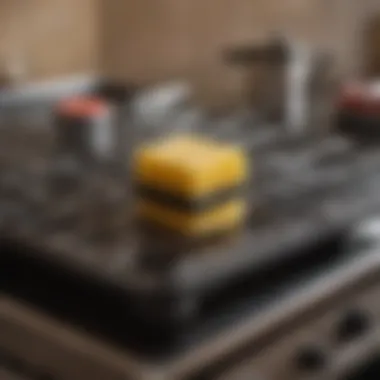
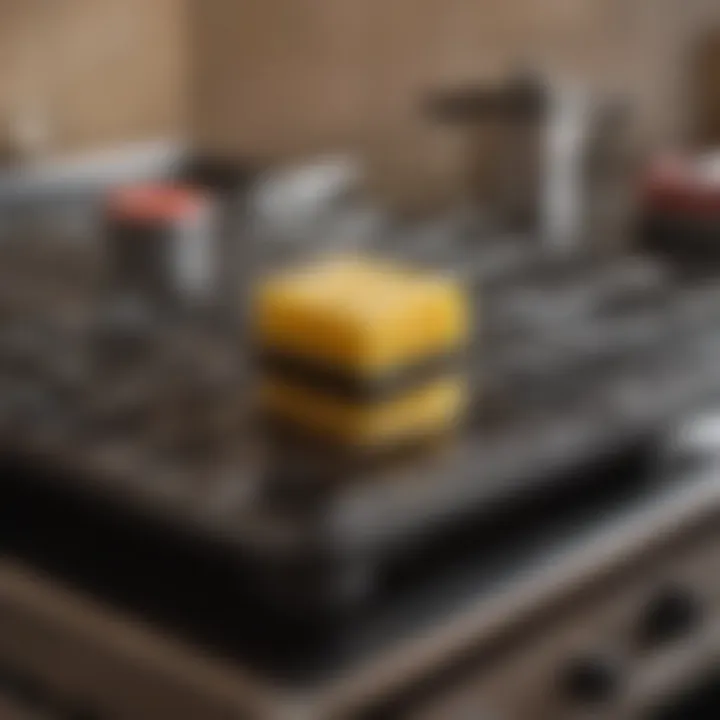
Take a moment to appreciate the effort you just put into cleaning your oven racks. However, cleaning is only the beginning. Post-cleaning care is a necessary next step that significantly contributes to the longevity and functionality of your oven racks. Proper rinsing and drying, along with reinstalling the racks thoughtfully, ensures that your cleaning efforts do not go to waste. The following sections delve into essential practices after your cleaning routine to keep your oven racks in optimal condition.
Rinsing and Drying
Thorough rinsing techniques
After cleaning, thorough rinsing is imperative. This process removes all traces of cleaning agents, dust, and grime from the racks. A key characteristic of thorough rinsing techniques is to employ running water, preferably at a mildly warm temperature. This condition is effective for breaking down any remaining soap or cleaner. Rinsing under flowing water, rather than soaking, helps to swiftly wash away residues. Many find using a spray nozzle advantageous since it provides direct control over water flow and allows more decisively evacuate dirt.
Advantages of this method include ensuring no additional contamination during the drying process, promoting better sanitation. On the downside, if not done well, some cleaners might still linger, potentially affecting cooking quality and taste. In this article, you are involved deep; hence, emphasis on rinsing catches importance.
Proper drying methods
Ensuring proper drying methods is critical to prevent rust or further contamination of oven racks. The standout feature of proper drying is that it typically involves air drying instead of exchanging moisture onto surfaces. Air circulation allows for natural evaporation post rinsing. You can place the racks in areas where airflows, particularly on a dry kitchen counter or outdoors, can hasten this drying process.
Professional delegates recommend this method as it reduces the potential risk of damaging the finish. Yet, if high humidity is an issue during the period, consider using a lint-free cloth to gently pat them down. Avoid using paper towels as they may leave behind fibers. Therefore, being vigilant over the drying process ensures the longevity that every user desires.
Reinstalling Oven Racks
After a detailed cleaning session, reinstalling oven racks properly sets the stage for future cooking sessions. The placement of each rack can immensely influence heat distribution when using the oven. A strategy involves ensuring these racks return to their appropriate places. This allows proper air flow and adjusts lack complexity in preparing a culinary favorite.
Ensuring proper fit
Attention to ensuring proper fit carries weight while reinstalling. A key trait of a proper fit includes aligning the oven racks in their designed grooves inside the oven. Most manufacturers design racks uniquely, ensuring an effortless cloud of heat source during cooking. The benefit of ensuring accurate placement maintains overall oven performance through lesser thermal waste.
However, monitoring can become necessary for variations in oven styles. Adjust caution while ensuring an exact fit. Inappropriate placements may cause unintended wear or impede balance leading to tedious moments. Gentle reminders during installation make securing proper placement not only easier but rewarding.
Routine maintenance tips
Routine maintenance tips can ease the future cleaning effort. One discreet practice of routine care is wiping down the racks spotlessly after use. This prevents accumulation of spills and grease. Flexibility behind this kind of maintenance is achievable, making allowing even the busiest among people to continuously care for their oven racks effectively.
Creating a schedule count as a functional technique. By dedicating time monthly or based on usage, preventative measures materialize. Ensure to examine them thoughtfully to spot emerging wear. Simply preferring straight cleaning or preventive maintenance techniques will drastically improve the longevity of your kitchen tools, especially encouraging happy cooking routines in smoother ways.
Consistent attention toward post-cleaning practice fortifies current effort thereby reflecting satisfaction through better efficiency in every dish prepared.
Epilogue
Cleaning oven racks holds significant importance for several reasons. First, maintaining the cleanliness of these racks not only enhances the look of your oven but also ensures safe food preparation. Residue and buildup can lead to off-flavors or even transfer harmful particles to food. Thus, a clean oven rack can improve the taste of cooked meals.
Moreover, regular cleaning promotes efficiency. When oven racks are free from grime, heat circulates more effectively, which can contribute to more evenly cooked dishes. This aspect is especially critical for those who rely on their ovens for consistent results in cooking and baking.
Benefits of Cleaning Oven Racks:
- Improved appearance of the kitchen
- Prevention of smoke and unpleasant odors during cooking
- Potentially longer life for your oven by minimizing wear and tear
- Enhanced cooking results
While it might seem like a hassle at first, incorporating oven rack cleaning into your routine can make a significant difference. Establishing a regular cleaning schedule prevents heavy buildup, making the task manageable. Each cleaning method discussed in this article offers practicality and efficiency, catering specifically to those with busy lives.
"A clean kitchen serves to provide not just a space for cooking but also a backdrop for creating culinary masterpieces."
Commonly Asked Questionss
Understanding frequently asked questions about cleaning oven racks is vital for both novice and seasoned cooks. These common queries address practical concerns and provide clarity on techniques. Through FAQs, individuals can gain insights on not only the best practices but also what to consider when tackling the cleaning process. Each question highlights important aspects ensuring kitchen maintenance does not become an overwhelming chore. Dive into these responses for enhanced knowledge about caring for your oven racks.
How often should clean my oven racks?
It is advisable to clean oven racks at least once every three months, although the frequency can depend on usage. If you use the oven often for greasy or spill-prone meals, consider cleaning the racks more frequently. Keeping your oven racks clean prevents the buildup of grease and grime. This cleanliness protects your food from absorbing unwanted flavors. Regular maintenance promotes better air circulation in your oven, leading to more even cooking. If the racks appear dirty, inspecting them can help to decide the urgency of cleaning, regardless of the set schedule.
Are there any specific products should avoid?
When it comes to cleaning products, certain chemicals should be avoided. Products that contain harsh abrasives can scratch and damage the surface of oven racks. Similarly, refrain from using any acidic cleaners like lemon juice or vinegar when cleaning metal racks, as they can lead to corrosion over time. Additionally, avoid products that are not safe for food surfaces. Always check ingredient lists to ensure they are suitable for the cookware. Hopefully, choosing gentle yet effective products ensures your racks remain in optimum condition.
What if my oven racks are severely stained?
Severely stained oven racks can be a persistent challenge. In such cases, a more intensive approach is needed. Consider using a baking soda paste to penetrate tough stains. Mix equal parts of baking soda and water, and apply the paste directly onto the stained areas. Allow it to sit for at least 30 minutes, then scrub with a non-abrasive sponge. If stains resist removal, repeating the process may be necessary. For extreme cases, soaking the racks in a solution of warm water and dish soap for several hours can loosen grime and ease the cleaning process. Regular inspections help a lot to keep staining manageable.







